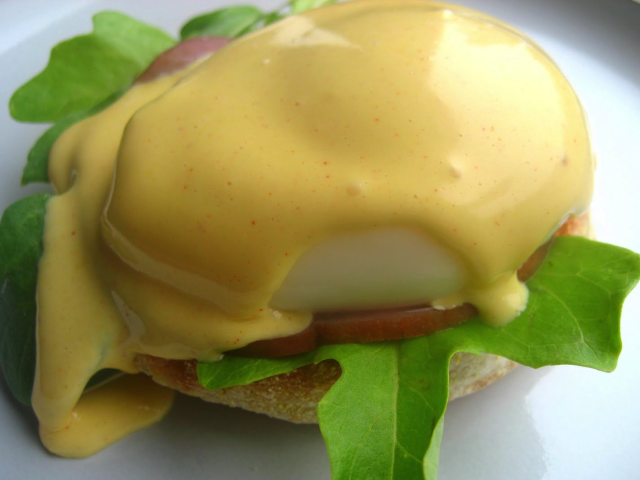
I left for last the sauce that is the one closest to my heart. The sauce of the sauces. Well at least for me it is. I love this sauce as nothing in the world. It is a sauce that has only one way of making it and can accommodate everything, from veggies to cardboard.
Alan Davidson notes a “sauce à la hollandoise” from François Marin’s Les Dons de Comus as early as 1758, but since that sauce included butter, flour, bouillon, and herbs, and omitted egg yolks, it may not be related to the modern hollandaise. However, Larousse Gastronomique states that, in former times fish ‘à la hollandaise’ was served with melted butter (implying that at one time egg yolks were not a part of the designation). Davidson also quotes from Harold McGee (1990) who explains eggs are not needed at all and proper emulsification can simply be done with butter. He also states that if one does wish to use eggs they are not needed in as great quantities as normally called for in traditional recipes.
Sauce Hollandaise, as we now know it, is the modern descendant of earlier forms of a sauce believed to have been brought to France by the Heugenots in the Early 17th century. It appears to have actually been a Flemish or Dutch sauce thickened with eggs, like a savory custard, with a little butter beaten in to smooth the texture. The sauce using egg yolks and butter in the specific hollandaise way however, appeared in the 19th century. Most historians agree that it was originally called Sauce Isigny after Isigny-sur-Mer, a Normandy city known for its butter. Today, Normandy is called the cream capital of France. During World War I, butter production came to a halt in France and had to be imported from Holland. The name was changed to hollandaise to indicate the source of the butter and was never changed back. According to another source Mrs. Isabella Beeton’s Household Management had recipes in the first edition (1861) for “Dutch sauce, for fish” (p. 405) and its variant on the following page, “Green sauce, or Hollandaise verte”. Her directions for hollandaise seem somewhat fearless:
“Put all the ingredients, except the lemon-juice, into a stew-pan; set it over the fire, and keep continually stirring. When it is sufficiently thick, take it off, as it should not boil…“
Personally I find that method way to crude to be part of the smooth texture hollandaise sauce is. I agree with the first description, although the name is still a bit sketchy. Never the less, it is the best sauce ever conceived. It is cream rich and flavorful. The whole texture primarily depends on the process primarily and secondly on the ingredients.
- 3 egg yolks
- 1 tsp water
- 1/4 tsp sugar
- 12 tbsp (1 1/2 sticks) unsalted butter, chilled and cut into small pieces
- 1/2 tsp kosher salt
- 2 tsp freshly squeezed lemon juice
- 1/8 tsp cayenne pepper
The construction starts with a water bath. Add about an inch of water in a pot and a metal bowl on top. Make sure that the bowl is not touching the surface of the water and that the part of the bowl will be used can be warmed by the steam; cold spots can be really catastrophic. You start by beating the eggs with the water until they become more white and more take up some volume, but NOT on the water bath, just have them in the bowl. Add the sugar and continue beating for another 2 minutes. After those ingredients are incorporated put the bowl over the steam and let it there to warm through without stop the beating. In 5 minutes the sauce would be thickened enough to coat the back the spoon.
Take it of the heat and start adding the chilled butter one by one. Make sure that each piece is throughly incorporated before you add the next. Initially the sauce will have enough residual heat to melt the butter. While the process continues however, you will need more and more time to melt the butter. It is not a bad idea to go back to the steam bath once in a while. Be careful, however, not to cook it since it will curd the protein and separate the fat of the sauce. Once the lat piece of the butter has been successfully added, add the lemon juice and the salt.
Hollandaise although there are not many thing you can do for the preparation, it has a lot of variations, mainly due to various additions. (list is taken by Auguste Escoffier, La Guide culinaire, Editions Flammarion (1921))
Sauce Mousseline: whipped cream folded in to Hollandaise (also known as Sauce Chantilly).
Sauce Béarnaise: replace lemon reduction in recipe with a strained reduction of vinegar, shallots, fresh chervil, fresh tarragon and crushed peppercorns.
Sauce Maltaise: lemon zest (blanched) and juice of blood orange.
Sauce Divine: reduced sherry folded into whipped cream.
Sauce Noisette: Hollandaise made with browned butter (beurre noisette).
Sauce Bavaroise: cream, horseradish, thyme.
Sauce Foyot (a.k.a. Valois): add meat glaze (Glace de Viande) to Bearnaise.
Sauce Colbert: Sauce Foyot with addition of reduced white wine.
Sauce Paloise: Béarnaise but substitute mint for tarragon (great with Lamb).
Sauce Creme Fleurette: add Crème fraîche.
Sauce Choron: Béarnaise plus tomato purée (without tarragon or chervil).
Sauce Dijon: add Dijon mustard (also known as Sauce Moutarde or Sauce Girondine).
Sauce au vin blanc (for fish): add reduction white wine and fish stock.


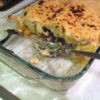
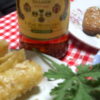
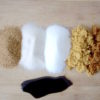
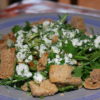
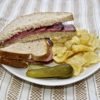
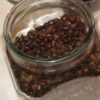

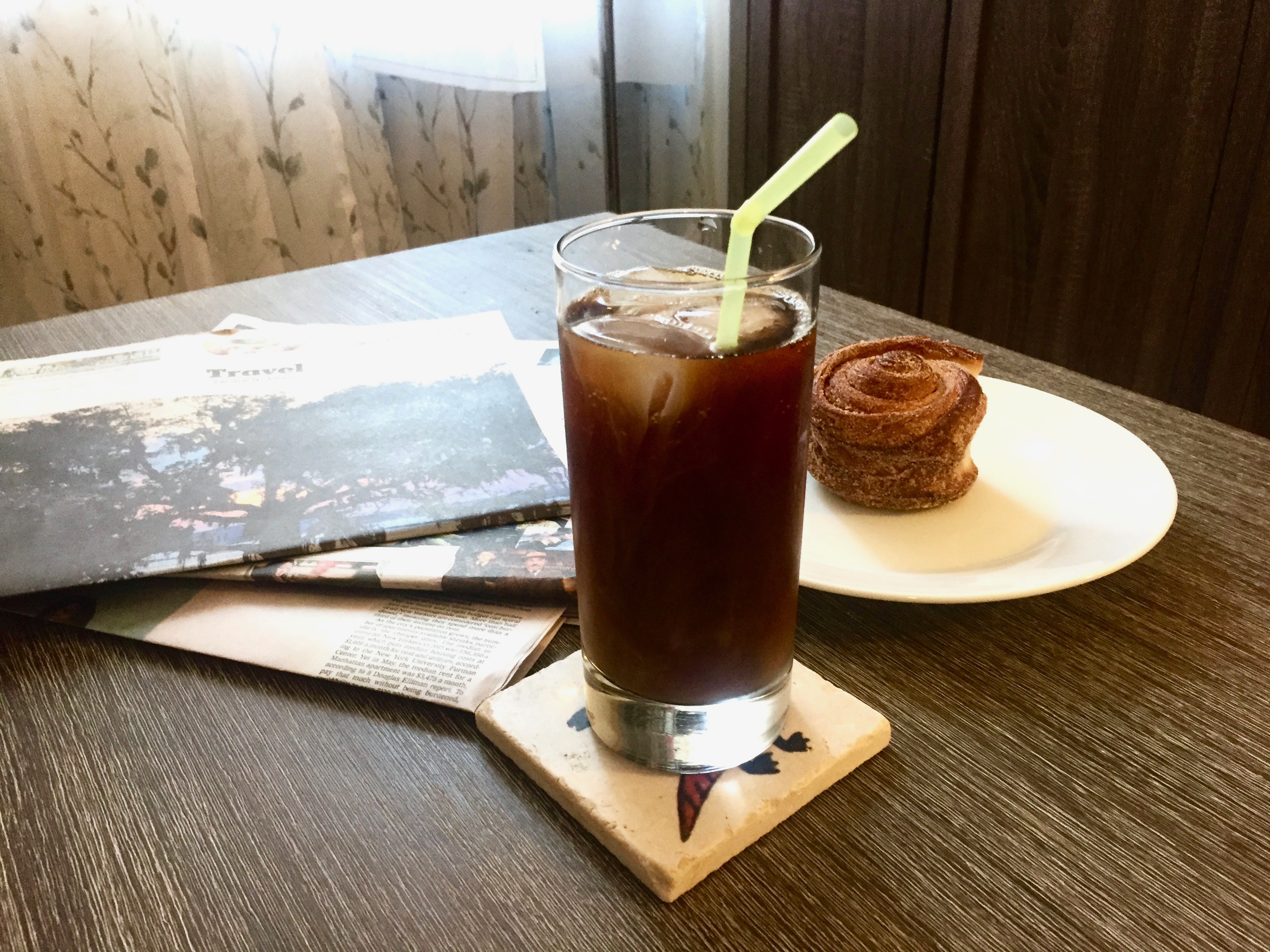
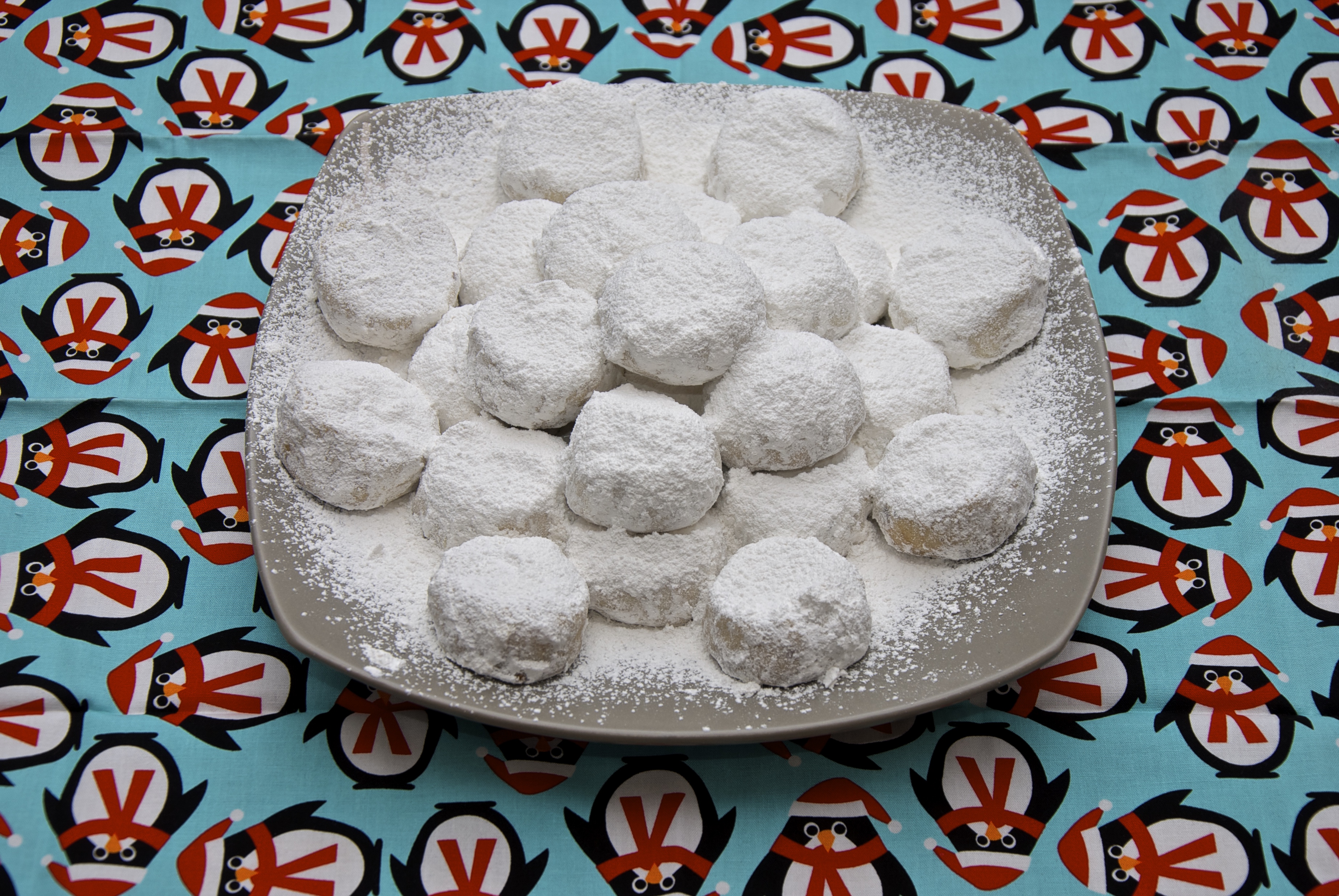
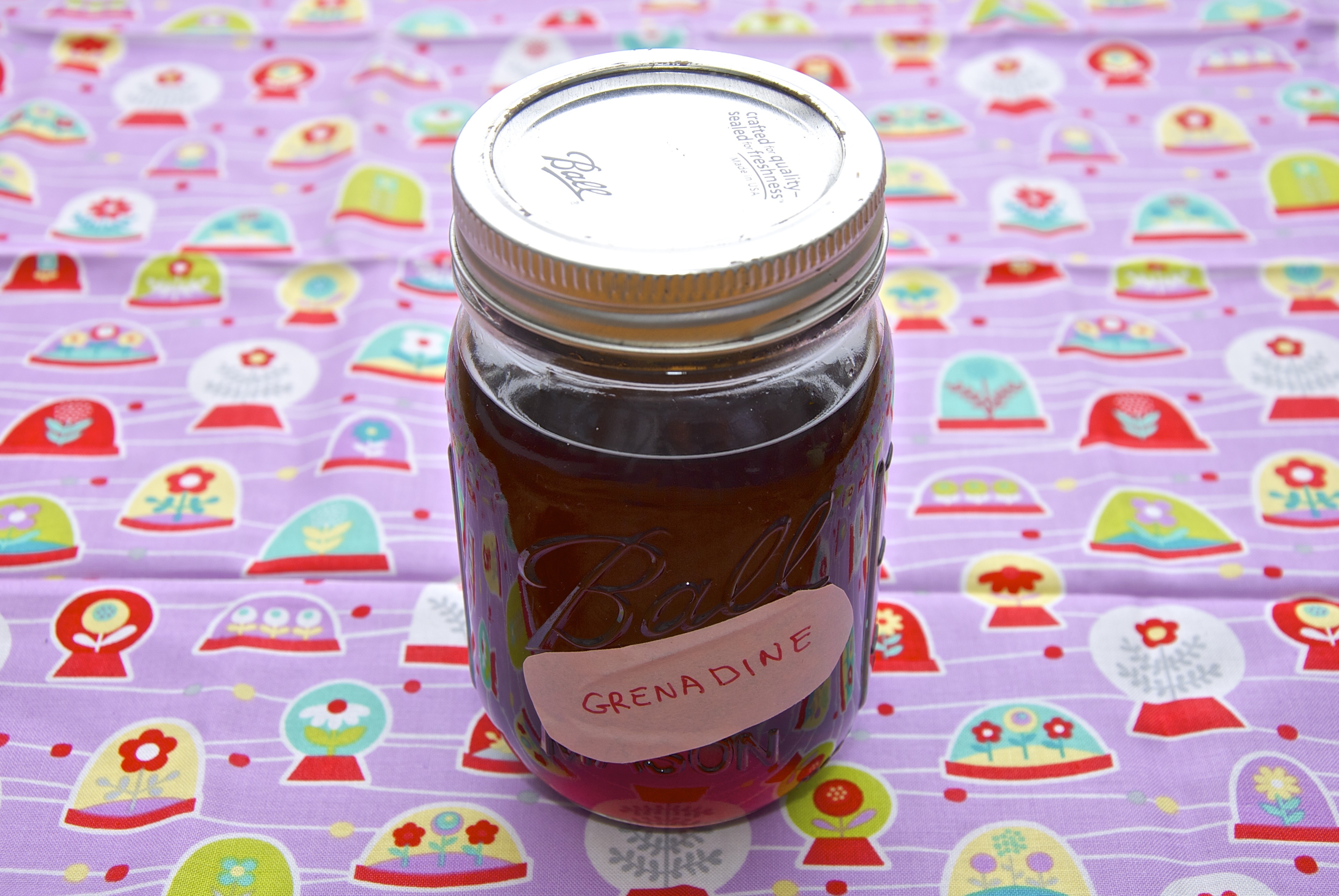
Leave a Reply